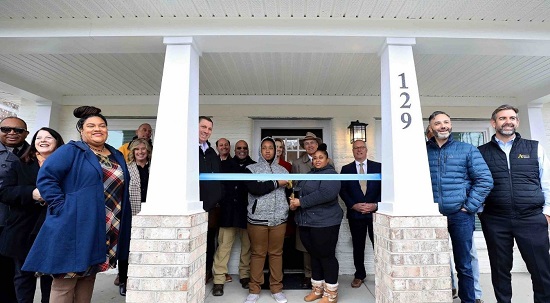 Friday, October 4, 2024
Friday, October 4, 2024  Friday, October 4, 2024
Friday, October 4, 2024 
Habitat for Humanity, a non-profit that builds and repairs homes in partnership with lower-income families and individuals, has officially signed over its first 3D printed home.
Habitat for Humanity partnered with Alquist to build the 1200-square-foot house in Williamsburg, VA. Alquist, a large-scale 3D printing company, aims to make home ownership more accessible across demographics using advanced, environmentally-friendly building techniques. Not only does the company’s strategy reduce build time, but its 3D printed concrete homes are said to boast longer life expectancies than traditional wood-framed structures. Concrete walls also stand up well against tornadoes and hurricanes and help to reduce homeowners’ energy bills, as they offer better insulation than wood and drywall.
The single-family residence became April Stringfield’s home just days before Christmas. Stringfield, who works at a nearby hotel and has a 13-year-old son, purchased the home through Habitat for Humanity’s Habitat Homebuyer Program, which allows people with lower yet steady incomes purchase homes with zero interest.
Walking by, you’d never guess the home is 3D printed. Its walls are made of layered concrete, giving the exterior a textured look almost like stucco. (Alquist’s site says each home’s interior and exterior finish is up to the homebuyer, as the company is able to produce a smooth, stucco-like, or “popcorn” finish.) The crew was able to print the home in 12 hours, reducing construction time by several weeks. Some of the home’s decorative features, like its front porch, appear to have been built using traditional methods—but the home comes with a personal 3D printer that allows Stringfield to print items like trim and cabinet knobs, should she need them in the future.
Prior to Stringfield’s move-in, the home was fitted with a Raspberry Pi-based monitoring system designed to maximize energy efficiency and comfort.
Keep reading on ExtremeTech.com